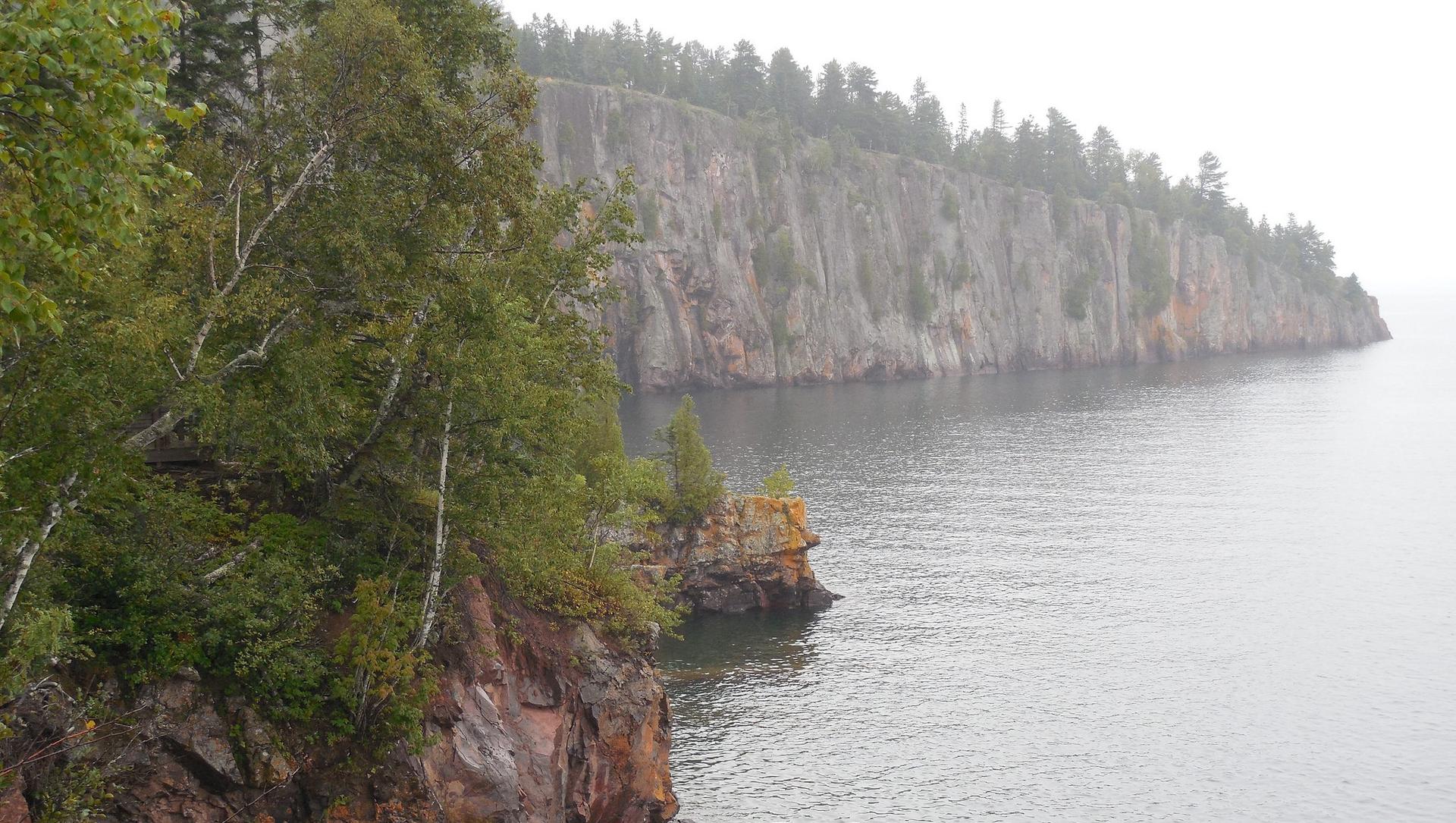The Midcontinent Rift could have split North America apart a billion years ago. Why didn’t it?
Tettegouche State Park in Minnesota is pictured here. Geologists say Lake Superior’s dark, volcanic cliffs are the exposed remains of the Midcontinent Rift, which was poised to split our continent over a billion years ago.
Ever imagine Minnesota as a coastal state?
The idea sounds absurd (especially as winter nears), but history shows that at one time, it wasn’t so unlikely: 1.1 billion years ago, the continent was splitting apart along the Midcontinent Rift, a move that could have turned states like Minnesota, Wisconsin and Michigan into oceanfront real estate. But the rift stalled, leaving a huge scar in the Earth’s crust. What happened?
Michael Wysession, a geologist at Washington University in St. Louis, is part of a multi-institution team that’s been mapping the rift (and teasing out its story) using earthquake data and gravity measurements. “This was the African Rift Valley of its age,” he says. “The continent was splitting apart, and the crust was thinning.”
But something unusual happened as the Midcontinent Rift spread: It encountered a volcanic hot spot. Wysession estimates that 2 million cubic kilometers of lava were released across the rift region, a flood that’s still detectable today in measurements of the area’s gravity.
“The pull of gravity actually varies slightly as you move about Earth’s surface,” Wysession says. “It's the result of changes in density of the rock underneath you. Now, normally when you cross a rift like the African Rift Valley, your gravity is a little bit weaker, because you stretched and thinned the crust, and you filled it in with sediments, which are less dense.
“This scar is just the opposite. It's a gravity high. Gravity pulls you a little bit more, and it's because there are 20 kilometers deep of basaltic lava that filled in this rift. In fact, instead of the crust being thin, the crust is actually 20 kilometers thicker than normal, because of this massive amount of lava that filled in.”
All that lava affects more than just gravity along the Midcontinent Rift, an upside-down “U” extending from Oklahoma all the way to Lake Superior, and back down again through Indiana, reaching as far as Alabama. Wysession notes that over millions of years, hot fluids flowing through the basaltic lava pulled out metals like copper, creating rich veins in Minnesota and Wisconsin. The layer of lava also patched up the rift, which is why today there are very few earthquakes in the region — normally good indicators of a weak or rifted area in the Earth’s crust.
“This Midcontinent Rift is like a scar that's healed over with very thick scar tissue,” Wysession says. “It’s … stronger than the surrounding crust, so it has no earthquakes. We actually had the set of seismometers up here for two years. We recorded thousands and thousands of mine and quarry blasts. We recorded 12 earthquakes that were about a magnitude 1 in size, which is essentially nothing.”
But for scientists working to better understand the Midcontinent Rift, the relative lack of local earthquakes is no deterrent: They just rely on earthquakes happening elsewhere. “We can't see through rock,” Wysession says. “This is a problem that geologists have had for centuries. … I can't tell you what's, you know, a foot beneath the ground. But we can hear what's in the Earth.”
Using a network of seismometers, the scientists can listen to earthquakes arriving underground from around the world. “It allows us to make 3-D images, much like a sonogram does,” Wysession says.
The team’s gravity and earthquake research has been used to map the Midcontinent Rift; it's a 3,000-kilometer feature, extending further south than previously thought. It has also given the scientists new insight into what halted the rift. Wysession says his colleagues at Northwestern University and the University of Illinois believe Brazil has a lot to do with our oceanless Midwest.
“It seems like right about this time, what is now the Amazon basin of South America — we called it at that point Amazonia — was sliding past the southern part of what is now the United States,” Wysession says. “And while it was sliding past, this is when the rifting across the Midcontinent Rift occurred.
“As soon as [Amazonia] broke away and the ocean started opening there, between … North America and Amazonia, that relieved the stress that was pulling our rift apart, and our rifting stopped there. So if it hadn't been for South America, we would now be in two pieces. So we owe Brazil a great debt.”
This article is based on an interview that aired on PRI's Science Friday.
